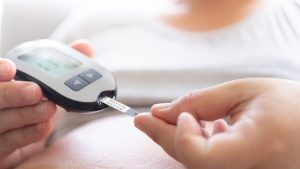From The Web / New blood pressure guidelines may make millions anxious that they’re at risk of heart disease

Recent recommendations to lower the threshold for diagnosing patients with high blood pressure are likely to harm up to 80% of those newly diagnosed. Our analysis, published today in the journal JAMA Internal Medicine, argues the recommendations from two US bodies to diagnose people with a top blood pressure reading (systolic) of 130mmHg as having hypertension (high blood pressure) may do far more harm than good.
Previously, a person would be diagnosed as having hypertension if their systolic reading was 140mmHg or more. But late last year, the American College of Cardiology and the American Heart Association recommended lowering the threshold to 130mmHg.
High blood pressure is only one risk factor for heart disease and stroke. Other factors such as age, gender, smoking and diabetes also contribute to the overall risk profile. All of these must be considered together for a more accurate assessment of a person’s risk of heart disease and stroke.
Read more: How Australians Die: cause #1 – heart diseases and stroke
The recent recommendations will influence clinical practice worldwide – including in the UK and Australia. This could result in an additional 31 million people in the US, 6.7 million in the UK and 2.4 million Australians being told they have hypertension, implying they are at risk of heart disease and stroke. This may lead to anxiety over their future health and to treatment they might not need.
Prominent medical groups in the US have expressed concerns about the recommendations. The American College of Physicians said the stated benefits of reducing risk of heart disease and stroke were overestimated and harms underestimated. The American Academy for Family Physicians also raised concerns the harms of lowering the threshold were not assessed.
A key trigger for the decision to lower the diagnostic threshold appears to be the results of the US-based SPRINT trial. This found benefits to reducing blood pressure to a systolic reading of 120mmHg, rather than 140mmHg, for those at high risk of heart disease or stroke.
Even before the new guidelines were released there were concerns that SPRINT would promote a “one size fits all” approach to lowering blood pressure. Other trials, including those done in lower-risk populations, failed to find the same benefits as SPRINT. This underscores the importance of individualising decisions about lowering blood pressure, taking into account both the patient’s overall risk profile and their preferences.
Read more: Health Check: what do my blood pressure numbers mean?
Our analysis found 9% of newly diagnosed hypertensives who are at high risk of a heart event or stroke, or who already have a history of heart disease, might benefit from the tighter guidelines. But the vast majority, which is the 80% of newly diagnosed who are at low risk of a heart event or stroke, will not benefit and may be harmed by the new diagnostic criteria. For the 11% of newly diagnosed who have an intermediate risk of heart disease, the benefits and harms are often in rough balance.
Changing the diagnostic and treatment thresholds for hypertension could put people at risk in three ways:
First, wider disease definitions mean more people are labelled as unwell, even if they have a low risk of a disease. Labelling a person as having hypertension increases their risk of anxiety and depression, as compared to the risk for people with the same blood pressure who aren’t labelled as hypertensive.
Read more: Five commonly over-diagnosed conditions and what we can do about them
Second, more people may experience negative effects from treatments to lower their blood pressure. Even though the new guidelines recommend non-drug interventions first for low-risk people, it seems likely many will be offered drugs to lower blood pressure if their reading remains above 130mmHg.
For example, the latest American College of Cardiology guide for clinicians says that although a person with low risk of heart disease should focus on lifestyle changes first, medication may be needed to achieve the goal of <130mmHg.
Third, in countries without universal health coverage, such as the US, people newly diagnosed with hypertension may face difficulties gaining insurance coverage for a “pre-existing” condition.
So what should you and your doctor do in response to the new guidelines? First, you should have your risk of heart disease estimated using a reliable risk calculator (such as this one or this one or this one). This is more important for predicting your chance of a heart attack or stroke than just looking at your blood pressure.
If you are one of the many people who have a systolic blood pressure measurement that is 130-140mmHg, and are otherwise at low risk of heart disease, we believe doctors shouldn’t label you as having hypertension. Doctors should continue to support you to make healthy choices with regard to your diet and physical activity regardless of whether your systolic blood pressure is above or below 130mmHg.
Read more: Seven things to eat or avoid to lower your blood pressure
If you are one of the smaller number of people at high risk of heart disease with these systolic readings, medications in addition to a healthy lifestyle are beneficial. The blood pressure target should be individualised and based on your risk profile and preferences. You might discuss with your doctor ways to help make sure you take the medication.
![]() If you are in between these two extremes, the benefits and harms of diagnosis are in rough balance. Some people are willing to adopt or continue a healthy lifestyle and accept a moderate increase in the risk of a heart event to avoid taking daily medications, increased doses or more medications, and others are not. In this situation, informed and shared decision-making between you and your doctor is essential.
If you are in between these two extremes, the benefits and harms of diagnosis are in rough balance. Some people are willing to adopt or continue a healthy lifestyle and accept a moderate increase in the risk of a heart event to avoid taking daily medications, increased doses or more medications, and others are not. In this situation, informed and shared decision-making between you and your doctor is essential.
Katy Bell, Senior Lecturer in Clinical Epidemiology and Senior Research Fellow in the School of Public Health, University of Sydney; Amir Qaseem, Adjunct Faculty, Thomas Jefferson University; Jenny Doust, Professor of Clinical Epidemiology, and Loai Albarqouni, PhD candidate in Evidence-Based Practice
This article was originally published on The Conversation. Read the original article.

